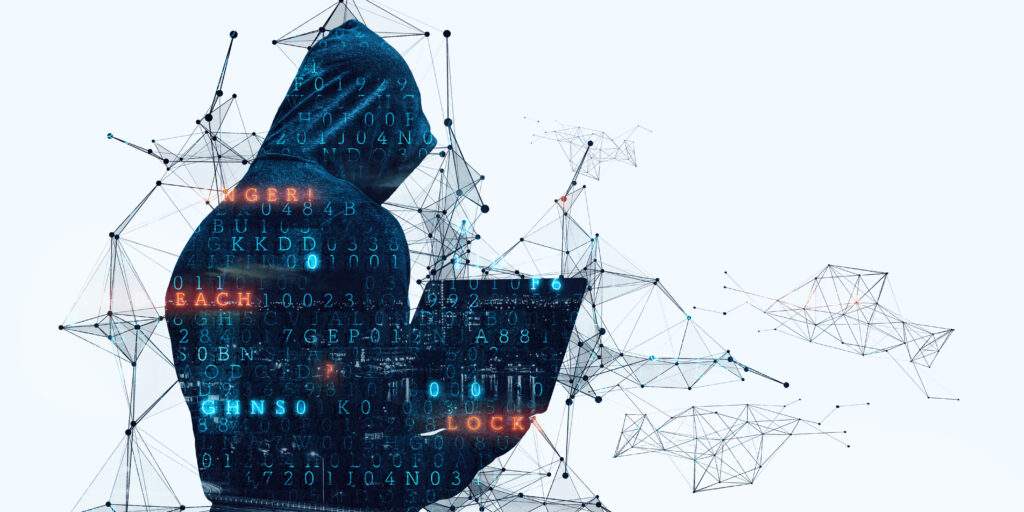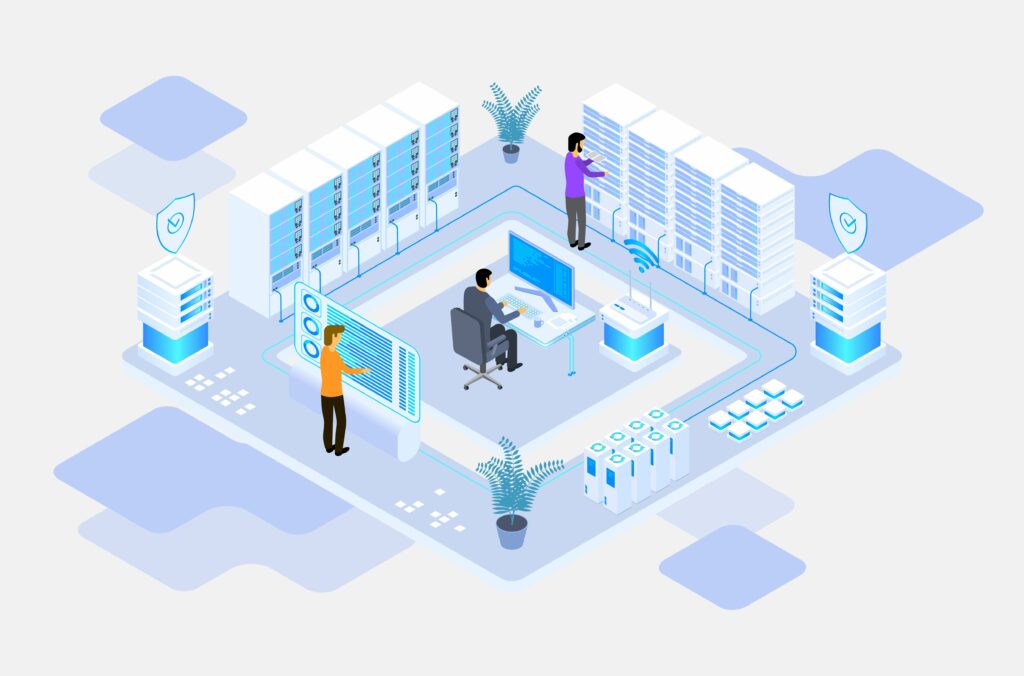What is a Security Operations Center (SOC)

With the rise of data breaches and cyber attacks, organizations are looking for ways to better protect their information. One way to do this is by establishing a Security Operations Center (SOC).
A SOC is a centralized unit that is responsible for monitoring and responding to security threats.
The Security Operations Center, or SOC, is a critical part of an organization’s security posture. It is responsible for monitoring and responding to security events and incidents.
A well-run SOC can help organizations protect their data and reputation, while reducing the cost of incident response.
In this blog post, we’ll discuss what a SOC is, what it does, and how it can benefit your organization. This can be either an in house SOC, or a managed Security Operations Center (or “SOC as a service”)
The core of a SOC is a specialized team of security experts who are responsible for monitoring and responding to security events. This includes both proactive and reactive tasks, such as identifying potential threats, investigating incidents, and addressing vulnerabilities.
The SOC team typically consists of a team of security experts, including security analysts, incident responders, and security engineers who have experience, skills and in-depth understanding security analytics in areas such as EDR monitoring, network security, incident response and vulnerability management.
Defining a SOC
The main goal of a SOC is to stop, or at least minimize the impact of a cyber attack by proactively detecting and responding to security incidents.
Furthermore, it must employ teams of experienced analysts who can monitor for threats on a 24/7 basis to ensure system and sensitive data remain secure at all times.

What does a SOC do?
A SOC is used by organizations to monitor and analyze events related to their cyber security.
The SOC personnel are often the first line of defense against cyber security threats, as they monitor for suspicious activity, malicious actors and unauthorized access in your network.
They use sophisticated tools for threat detection and detailed security insights to identify cyber incidents, investigate the root cause of them, respond accordingly, and deploy countermeasures.
By maintaining proactive control of their networks, organizations can better protect their information assets from malicious attacks.
In addition to traditional recommendations such as increasing awareness and understanding of potential threats, employing a SOC is an essential component of any organization’s efforts towards achieving optimal cyber security.
What are the key components of a SOC?
It has four key components: People, Processes, Technologies and Programs.
- Personnel are needed in the SOC to manage operations, such as incident analysis and reporting, security risk management, monitoring processes and procedures, among other duties.
- Processes include both manual tasks performed by personnel on a regular basis as well as automated solutions that carry out specific functions when triggered by certain conditions.
- With Technologies, these typically include both IT systems and specialized security solutions which can detect advanced threats and help to mitigate any security risks or threats detected.
- In programmes there are procedures related to communication with internal or external stakeholders in addition to guidelines for how threat analysis is conducted across the enterprise.
All these key components combine to help ensure that an organization’s digital infrastructure operates securely.

The Benefits of Having a SOC
Having your own in house or a managed SOC is essential for businesses looking to stay secure in the digital age. A SOC specializes in threat detection, which involves continuous monitoring of a business’s systems for any malicious activity or suspicious behavior.
It can detect and address threats that may come from malicious files, breaches, unpatched vulnerabilities and more.
By leveraging automation and machine learning, SOCs are constantly evolving to provide comprehensive protection across every layer of an enterprise infrastructure in real-time.
Good SOC providers also has their cybersecurity professionals analyze the latest threats and using alert logic to create a new custom made security alert.
How can it help your organization improve its security posture and better defend against cyber threats?
Implementing a Security Operations Center (SOC) can help organizations achieve better security management and protect their assets from cyber threats.
A comprehensive SOC solution enables companies to monitor all data sources across their networks, identify potential malicious activity, and for the security team to quickly respond to security incidents or vulnerabilities.
Additionally, the SOC teams are capable of responding to endpoint security events, analyzing network activity, do vulnerability management, perform threat hunting, and rapidly responding to minute changes in behavior found near forgotten accounts, and recognizing attack patterns.
This type of vigilance strengthens an organization’s overall security posture by helping them detect malicious intent early on and take appropriate action before it does any harm.
Ultimately, a dedicated SOC provides vital protection for organizations by reducing their attack surface, detecting abnormalities within their environment, and minimizing the potential for damage caused by malicious cyber threats.

Getting Started with Your SOC
Starting to use a Security Operations Center (SOC) is an important step for any organization. By having complete visibility into the IT systems, the organization can make sure that it is secure from cyber threats.
Using the SOC’s threat intelligence, threat detection, analytics and event management tools, organizations can detect and respond to potential security threats quickly and effectively. It is also beneficial for organizations to have well documented processes in order to manage the environment properly.
Setting up a plan of action that includes assessment of risk, implementation of proper security controls, threat detection and response will help ensure optimal performance of your SOC.
Taking these steps will enable organizations to protect their data assets with greater confidence.
What are the benefits of using a Managed SOC provider?
A Managed SOC (or SOC as a service) can provide numerous benefits thanks to their specialized expertise and unique skill sets. These organizations have the personnel, technology, processes and procedures necessary to protect an organization against cyber threats.
The managed SOC service has the added value of seeing attacks and trends across multiple companies and the SOC analysts responds to a lot more attacks than they would have done in your own security operations center.
Companies that has a Managed SOC can take advantage of professional security services such as real-time monitoring of networks and systems, responding to detected incidents, logging of suspicious activity and activity correlation analysis, alerting user education and training resources, as well as incident response and management capabilities.
These days it is exceedingly difficult to build an internal SOC with having to find cybersecurity experts to hire, for a 24/7 service that would typically require hiring 6 analysts and a SOC manager.
The ability to take advantage managed SOC services without having to build out a full in-house security department is cost effective for many organizations and also provides rapid coverage for newly identified risks.
By using managed detection service your own IT personnel will not have suffer from alert fatigue by looking at a large amount of security alerts, the managed SOC provider will sort out the false positives and only create incidents that you need to act on.
However not everything is perfect of course. The downsides of using a SOC as a service is often that the SOC analyst has less insight into the actual company in terms of changes that might be happening internally, access to internal CMDB, or just general inside knowledge of systems and processes.

To sum up why a SOC is a good idea
In conclusion, having a SOC is essential to help your organization protect itself against cyber threats. A SOC is composed of personnel, processes, and tools that are dedicated to monitoring, responding to, and investigating security events.
SOCs enhance organizations’ security postures by identifying malicious activity as soon as possible; promoting better collaboration between IT ops and security teams; improving visibility across the full IT infrastructure; reducing operational costs; and increasing compliance with industry standards and data protection regulations.
To get started with setting up a SOC, I recommend reaching out to us to find out which tools and technologies that best fit the needs of your organization.
You should also be getting buy-in from upper management early on in the process, organizing a multidisciplinary team with cross-functional skillsets, tailoring detection methods to detect only relevant threats for your business environment, establishing an incident response plan with well-defined procedures for different scenarios, using automation and analytics whenever possible, setting supervisory roles for oversight and compliance efforts throughout the process.
For a smaller company which still has a high IT skill level there are quite decent open source and free tools for you to use, they require more work and setup of course but it gets you started protecting your critical systems. I would suggest you look into Wazuh, Velociraptor and Security Onion if that is the case.
Last but not least, practice proper risk management continuously in order to keep up with fast-evolving cyber threats.




